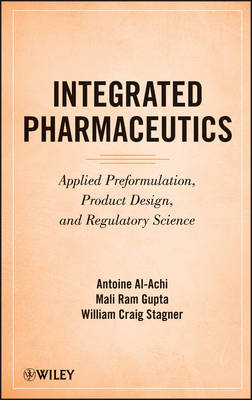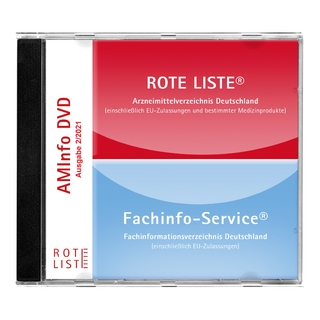
Integrated Pharmaceutics
John Wiley & Sons Inc (Hersteller)
978-1-118-48224-7 (ISBN)
- Titel wird leider nicht erscheinen
- Artikel merken
ANTOINE AL-ACHI, PhD, CT (ASCP), is Associate Professor of Pharmaceutics in the College of Pharmacy & Health Sciences at Campbell University. He is also the former head of the Formulation Development Division of Campbell's Pharmaceutical Sciences Institute (CUPSI).MALI RAM GUPTA, PhD, is Associate Professor of Pharmaceutical Sciences and Director of Pharmaceutical Education & Research Center (PERC) in the College of Pharmacy & Health Sciences. Prior to joining the faculty at Campbell University, he spent twenty-five years in various positions at Revlon, including director of quality control and assurance.WILLIAM CRAIG STAGNER, PhD, RPh, is Professor of Pharmaceutical Sciences and Director of Campbell University's Center for Analysis of Pharmaceutical Biomaterials. Prior to joining the faculty at Campbell, he established the Pharmaceutics Department at Glaxo Research Institute.
Dedication Acknowledgement Preface Foreword SECTION I PREFORMULATION 1 Mathematical Concepts 1.1 Introduction 1.2 The Simple Linear Relationship 1.3 Exponential Rules 1.4 The Logarithmic Rules 1.5 Differential Equations 1.6 Expanding and Reducing Formulas References for Chapter 1 Glossary for Chapter 1 2 Thermodynamics 2.1 Introduction 2.2 The Zeroth Law of Thermodynamics 2.3 The First Law of Thermodynamics 2.4 The Second Law of Thermodynamics 2.5 The Third Law of Thermodynamics 2.6 Polymorphism 2.7 Physical Stability of Crystal Forms 2.8 Solubility References for Chapter 2 Glossary for Chapter 2 3 Solubility and Dissolution 3.1 Introduction 3.2 Concentration Units 3.3 What Should Be Done when Alcohol is Prescribed in a Formulation? 3.4 The Partition Coefficient 3.5 Disintegration and Dissolution 3.6 Concluding Remarks References for Chapter 3 Glossary for Chapter 3 4 Biological Aspects of Formulations 4.1 Introduction 4.2 Bioavailability and Bioequivalence 4.3 Protocols for Determining Bioequivalence 4.4 Bioequivalence Procedure 4.5 FDA Approved Methods for Bioequivalence Studies 4.6 Approaches for Improving Bioavailability References for Chapter 4 Glossary for Chapter 4 5 Interfacial Properties 5.1 Introduction 5.2 Liquid-Solid Interface 5.3 Dosage Form Applications References for Chapter 5 Glossary for Chapter 5 6 Adsorption Phenomenon 6.1 Introduction 6.2 Adsorption on Filters 6.3 Adsorption of Proteins References for Chapter 6 Glossary for Chapter 6 7 Rheological Principles 7.1 Introduction 7.2 Newtonian Systems 7.3 Non-Newtonian Systems 7.4 Viscoelasticity 7.5 Reynolds Number 7.6 Concluding Remarks References for Chapter 7 Glossary for Chapter 7 8 Chemical Stability and Shelf-life Determination 8.1 Introduction 8.2 Shelf-Life Determination 8.3 Stability of Biotechnology Products References for Chapter 8 Glossary for Chapter 8 9 Particle Science 9.1 Introduction 9.2 Particle Size Estimation and Distribution 9.3 Micronization 9.4 Particle Size Preparation and Reduction for Pulmonary Delivery 9.5 Polymeric Particulate Matter 9.6 Nanoparticles 9.7 Segregation of Particles References for Chapter 9 Glossary for Chapter 9 10 Basic Statistics and Design of Experiment Concepts 10.1 Descriptive Statistics 10.2 Inferential Statistics 10.3 Statistical Applications in Quality Control Testing 10.4 Design of Experiment (DOE) References for Chapter 10 Glossary for Chapter 10 11 Formulation Development Concepts 11.1 Preformulation 11.2 Scale-up Considerations 11.3 Combination Products 11.4 Rate-controlled Drug Delivery 11.5 Drug Delivery Technologies for Improving Oral Delivery 11.6 Drug Delivery Technologies for Improving Transmucosal Delivery 11.7 Drug Delivery Technologies for Transdermal Delivery 11.8 Special Considerations for Biotechnology and Protein Delivery Systems 11.9 Drug/Excipient and Excipient/Excipient Interactions 11.10Presence of Contaminants in Formulation 11.11Other Considerations References for Chapter 11 Glossary for Chapter 11 SECTION II PRODUCT DESIGN 12 Introduction to Product Design 12.1 Formulation Design 12.2 Process Design 12.3 Container Closure System (CCS) Design References for Chapter 12 Glossary for Chapter 12 Appendix 12.1 FDA Route of Administration Nomenclature Appendix 12.2 FDA Drug Dosage Form Nomenclature Appendix 12.3 USP Dosage Form Nomenclature Appendix 12.4 FDA Package Type Nomenclature Appendix 12.5 USP Packaging Nomenclature Appendix 12.6 USP Packaging Fabrication Materials and Closure Types 13 Tablet Product Design 13.1 Introduction 13.2 Formulation Design 13.3 Process Design 13.4 Container Closure System (CCS) Design 13.5 Risk Management 13.6 Attribute Tests 13.7 New Drug Application (NDA) Stability Assessment References for Chapter 13 Glossary for Chapter 13 Appendix 13.1 Hygroscopicity Classification System Appendix 13.2 Diluents and Direct Compression Binders Appendix 13.3 Wet Granulation Binders Appendix 13.4 Hot Melt Excipients Appendix 13.5 Disintegrants Appendix 13.6 Lubricants Appendix 13.7 Antiadherants and Antisticking Agents Appendix 13.8 Glidants and Flow-aids Appendix 13.9 Wetting Agents Appendix 13.10 Nominal Screen Mesh Number and Sieve Opening in Microns 14 Capsule Product Design 14.1 Introduction 14.2 Hard-shell Capsules 14.3 Soft-shell Capsules 14.4 Formulation and Process Optimization 14.5 Container Closure System 14.6 Risk Management 14.7 Attribute Tests 14.8 New Drug Application (NDA) Stability Assessment References for Chapter 14 Glossary for Chapter 14 Appendix 14.1 Aldehyde Levels in Commonly Used Capsule Excipients Appendix 14.2 Aldehyde Levels in Commonly Used Liquid-Fill Capsule Excipients Appendix 14.3 Capsule Liquid-Fill Excipients 15 Dispersed System Product Design 15.1 Introduction 15.2 Formulation Design 15.3 Process Design 15.4 Container Closure System Design 15.5 Risk Management 15.6 Attribute Tests 15.7 New Drug Application (NDA) Stability Assessment References for Chapter 15 Glossary for Chapter 15 Appendix 15.1 Suspending, Viscosity Enhancing, and Structural Modifying Agents Appendix 15.2 Sweetening Agents Appendix 15.3 Flocculating Agents and Buffers Appendix 15.4 Emulsifying Agents Appendix 15.5 Required HLB (RHLB) for Oils and Waxes 16 Aerosol Product Design 16.0 Introduction 16.1 Formulation Design 16.2 Container Closure System Design 16.3 Risk Management 16.4 Attribute Tests 16.5 New Drug Application (NDA) Stability Assessment References for Chapter 16 Glossary for Chapter 16 Appendix 16.1 Aerosol Excipients 17 Sterile Injectable Product Design 17.1 Introduction 17.2 Formulation Design 17.3 Process Design 17.4 Container Closure System Design 17.5 Risk Management 17.6 Attribute Tests 17.7 New Drug Application (NDA) Stability Assessment References for Chapter 17 Glossary for Chapter 17 Appendix 17.1 Injectable Solvents and Cosolvents Appendix 17.2 Injectable Surfactants, Solubilizing, Emulsifying, and Thickening Agents Appendix 17.3 Injectable Buffers and pH Adjusting Agents Appendix 17.4 Injectable Antimicrobial Preservatives Appendix 17.5 Injectable Antioxidants Appendix 17.6 Stability Constants for Selected Sequestering Agents Appendix 17.7 Injectable Bulking Agents, Protectants, and Tonicity Adjusting Agents Appendix 17.8 Eutectic Temperatures for Selected Compounds Appendix 17.9 Glass Collapse Temperate, Tgc, Maximally Freeze-Concentrated Glass Transition Temperature, T?g, and Material Glass Transition Temperature, Tg, for Selected Excipients 18 Ophthalmic Product Design 18.1 Introduction 18.2 Formulation Design 18.3 Process Design 18.4 Container Closure System Design 18.5 Attribute Tests 18.6 New Drug Application (NDA) Stability Assessment References for Chapter 18 Glossary for Chapter 18 Appendix 18.1 Ophthalmic Excipients 19 Transdermal Product Design 19.1 Introduction 19.2 Formulation Design 19.3 Conclusion References for Chapter 19 Glossary for Chapter 19 Appendix 19.1 Transdermal Excipients 20 Oral Modified-Release Product Design 20.1 Introduction 20.2 Coatings 20.3 Matrix Systems 20.4 Gastroretentive Devices 20.5 Osmotic Controlled Release 20.6 Conclusion References for Chapter 20 Glossary for Chapter 20 Appendix 20.1 FDA Nomenclature for Oral Modified Release Dosage Forms SECTION III REGULATORY SCIENCE 21 Regulatory Practices and Guidelines 21.1 Worldwide Regulatory Agencies 21.2 Good Manufacturing Practice 21.3 FDA Inspection and Regulatory Actions References for Chapter 21 Glossary for Chapter 21 22 Compounding Pharmacy Regulations 22.1 Introduction 22.2 Compounding Guidelines 22.3 FDA Compliance Policy Guides 22.4 Good Compounding Practices 22.5 Stability Criteria and Beyond-Use-Dating of Compounded Preparations 22.6 Verification 22.7 Patient Counseling 22.8 Pharmacy Compounding Accreditation References for Chapter 22 Glossary for Chapter 22 Appendix 22.1 List of Compounding Drugs that were Withdrawn or Removed from the Market for Safety Reasons Appendix 22.2 List of Bulk Drug Substances for Compounding and Subsequent Use in Animals to which CVM would not Ordinarily Object Appendix 22.3 Formulation Record Appendix 22.4 Compounding Record 23 IND and NDA Phase Appropriate New Drug Development Process 23.1 Introduction 23.2 Preclinical Development Overview 23.3 Phase Appropriate Clinical Trials Overview 23.4 Investigational New Drug (IND) 23.5 NDA Review Process References for Chapter 23 Glossary for Chapter 23 24 Generics, Biosimilars, and OTCs 24.1 Generic Drugs 24.2 Biosimilar Drugs 24.3 OTC Drugs References for Chapter 24 Glossary for Chapter 24 Appendix 24.1 Office of Generic Drugs QbR Quality Overall Summary Outline 25 Accelerated New Drug Approval & Expedited Access of New Therapies 25.1 Background 25.2 Expedited Review and Approval of New Therapies 25.3 Expanded Access to New Therapies 25.4 Orphan Drugs 25.5 Pediatric Drugs 25.6 Pediatric Drug Development and the Orphan Drug Act Incentives 25.7 Common EMEA/FDA Application for Orphan Medicinal Product Designation References for Chapter 25 Glossary for Chapter 25 26 Post Drug Approval Activities 26.1 Postmarket Requirements and Commitments 26.2 Post Approval Manufacturing Changes 26.3 Clinical Phase 4 Studies: Postmarketing Surveillance & Risk Assessment 26.4 Prescription Drug Advertising and Promotional Labeling Direct-to-Consumers References for Chapter 26 Glossary for Chapter 26 Appendix 26.1 MedWatch 27 Drug Master Files & EU Dossiers 27.1 Drug Master Files 27.2 European Marketing Authorization Dossiers References for Chapter 27 Glossary for Chapter 27 28 Commissioning & Qualification 28.1 Regulatory Requirements 28.2 Preliminary C & Q Activities 28.3 Commissioning 28.4 Qualification & Validation 28.5 Qualification Protocols 28.6 Process Validation (PV) 28.7 Cleaning Validation 28.8 Computer Systems Validation 28.9 Change Control 28.10 Revalidation References for Chapter 28 Glossary for Chapter 28 29 Quality Sytems & Controls 29.1 Pharmaceutical Quality System 29.2 Quality Systems Approach to CGMP Regulations 29.3 Inspection of Pharmaceutical Quality Control Laboratories 29.4 Pharmacopoeias 29.5 Analytical Instrument Qualification (AIQ) 29.6 Validation of Analytical Procedures 29.7 Stability Testing of New Drug Substances and Products References for Chapter 29 Glossary for Chapter 29 Appendix 29.1 Application of Process Performance and Product Quality Monitoring System throughout the Product Lifecycle Appendix 29.2 Application of Corrective Action and Preventative Action System throughout the Product Lifecycle Appendix 29.3 Application of Change Management System throughout the Product Lifecycle Appendix 29.4 Application of Management Review of Process Performance and Product Quality throughout the Product Lifecycle Appendix 29.5 21 CFR CGMP Regulations Related to Management Responsibilities Appendix 29.6 21 CFR CGMP Regulations Related to Resources Appendix 29.7 21 CFR CGMP Regulations Related to Manufacturing Operations Appendix 29.8 21 CFR CGMP Regulations Related to Evaluation Activities Appendix 29.9 Pharmacopoeias Comparison Appendix 29.10 Recommended Validation Characteristics of the Various Types of Tests Appendix 29.11 Forced Degradation Parameters for Drug Substance (API) Appendix 29.12 Decision Flow Chart for Photostability Testing Of Drug Products Appendix 29.13 Stability Studies Test Appendix 29.14 Decision Tree for Data Evaluation for Retest Period or Shelf Life Estimation for Drug Substances or Product (Excluding Frozen Products) 30 Safety, Toxicology, & Pharmacogenomics 30.1 Nonclinical Safety Studies 30.2 Safety Pharmacology Studies 30.3 Carcinogenicity Studies of Pharmaceuticals 30.4 Genotoxicity Testing 30.5 Immunotoxicity Studies 30.6 Safety Reporting Requirements 30.7 Pharmacogenomics References for Chapter 30 Glossary for Chapter 30 Appendix 30.1 Selection of Maximum Recommended Starting Dose for Drugs Administered Systematically to Normal Volunteers Appendix 30.2 Conversion of Animal Doses to Human Equivalent Doses Based on Body Surface Area Appendix 30.3 Recommended Duration of Repeated-Dose Toxicity Studies to Support the Conduct of Clinical Trials Appendix 30.4 Recommended Duration of Repeated-Dose Toxicity Studies to Support Marketing 31 Regulatory Science Initiatives for Advancing Public Health 31.1 Advancing Regulatory Science for Public Health ? The Promise of Regulatory Science 31.2 Advancing Regulatory Science at FDA ? Strategic Plan for Regulatory Science 31.3 A Collaborative Implementation Framework References for Chapter 31 Glossary for Chapter 31 Index
| Erscheint lt. Verlag | 8.2.2013 |
|---|---|
| Verlagsort | New York |
| Sprache | englisch |
| Maße | 235 x 282 mm |
| Gewicht | 2347 g |
| Themenwelt | Medizin / Pharmazie ► Medizinische Fachgebiete ► Pharmakologie / Pharmakotherapie |
| Naturwissenschaften ► Chemie | |
| Technik ► Umwelttechnik / Biotechnologie | |
| ISBN-10 | 1-118-48224-7 / 1118482247 |
| ISBN-13 | 978-1-118-48224-7 / 9781118482247 |
| Zustand | Neuware |
| Haben Sie eine Frage zum Produkt? |
aus dem Bereich
